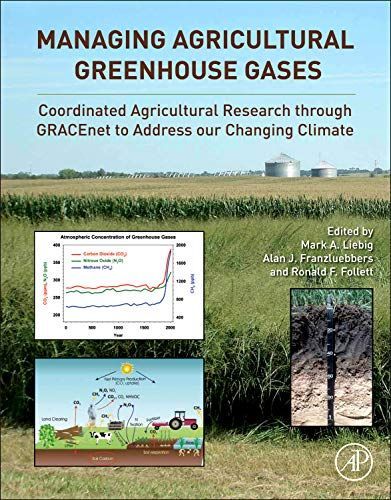
Managing Agricultural Greenhouse Gases Coordinated Agricultural Research Through GRACEnet to Address Our Changing Climate
Global climate change is a natural process that currently appears to be strongly influenced by human activities, which increase atmospheric concentrations of greenhouse gases (GHG), in particular carbon dioxide (CO2), methane (CH4) and nitrous oxide (N2O). Agriculture contributes about 20% of the world's global radiation forcing from CO2, CH4 and N2O, and produces 50% of the CH4 and 70% of the N2O of the human-induced emission. Interest is increasing among land managers, policy makers, GHG emitting entities, and carbon (C) brokers in using agricultural lands to sequester C and reduce GHG emission. Precise information is lacking, however, on how specific management practices in different regions of the world impact soil C sequestration and the mitigation of GHG emission. In 2002, the USDA Agricultural Research Service (ARS) developed a coordinated national research effort called GRACEnet (Greenhouse gas Reduction through Agricultural Carbon Enhancement network) to provide information on the soil C status and GHG emission of current agricultural practices, and to develop new management practices to reduce net GHG emission and increase soil C sequestration primarily from soil management. Managing Agricultural Greenhouse Gases synthesizes the wealth of information generated from the GRACEnet project in over 30 ARS locations throughout the US and in numerous peer-reviewed articles. Although GRACEnet is an ARS project, contributors to this work include a variety of backgrounds and reported findings have important international applications. For example, many parts of the world possess similar ecoregions to the U.S. (e.g., northern Great Plains is similar to the Argentina Pampas and Ukraine Steppe). Such similarities expand the appeal of this exciting new volume to a wide international readership. Frames responses to challenges associated with climate change within the geographical domain of the U.S., while providing a useful model for researchers in the many parts of the world that possess similar ecoregions Covers not only soil C dynamics but also nitrous oxide and methane flux, filling a void in the existing literature Educates scientists and technical service providers conducting greenhouse gas research, industry, and regulators in their agricultural research by addressing the issues of GHG emissions and ways to reduce these emissions Synthesizes the data from top experts in the world into clear recommendations and expectations for improvements in the agricultural management of global warming potential as an aggregate of GHG emissions